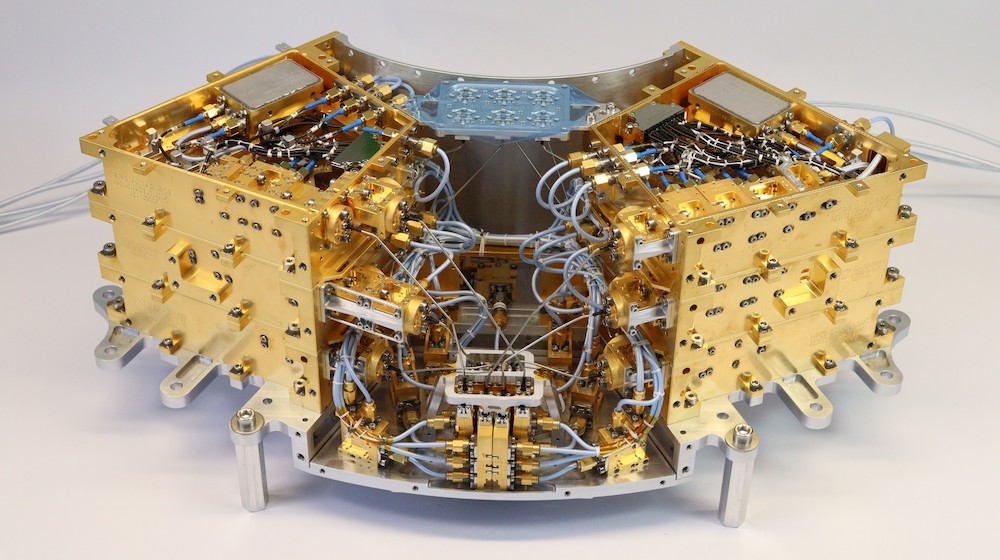Space Programs
RPG’s expertise in space technology began in 1995 with the development of sub-millimeter frontends for the Swedish ODIN satellite. Since then, we have significantly expanded our space business and capabilities, partnering with organizations worldwide on projects focused on weather observation and scientific research.
Our contributions include critical components for renowned missions like the HIFI/Herschel Space Telescope (ESA), JUICE (ESA), METOP Ice Cloud Imager (ESA), and the Arctic Weather Satellite (ESA), the latter operating at a leading frequency for weather observation of 325 GHz.
We are also pioneering new applications in radio frequency communication, participating in innovative scientific programs such as EIVE (DLR) and BEACON (ESA-ARTES), which focus on E-Band satellite communication links.
RPG designs and manufactures high-performance receivers for weather observation and space applications. We develop both heterodyne and direct detection receivers, tailored to meet the specific requirements of our clients, covering a frequency range from 57 GHz into the THz regime.
Space Projects
Frontend for the Ice Cloud Imager (ICI) on MetOp Satellite B
Outstanding Performance and Comprehensive Testing:
Our team has developed a frontend consisting of a total of 6 receivers operating in the frequency range of 183 to 664 GHz. These are divided into 13 ICI channels. Comprehensive test campaigns, including vibration, EMC, and thermal vacuum testing, have confirmed the reliability and performance of the frontend under extreme conditions.
Exceptional Sensitivity and Stability:
Measured noise temperatures between 600 K (at 183 GHz) and 2300 K (at 664 GHz) ensure exceptional sensitivity. The short-term gain stability of all receivers enables integration times of up to 15 seconds, resulting in an achievable NEDT (Noise Equivalent Delta Temperature) of 0.5 K to 1.6 K. This demonstrates state-of-the-art radiometric performance, setting a new standard for future millimeter and submillimeter wave instruments dedicated to atmospheric remote sensing and weather prediction.
Successful Delivery and Future Outlook:
RPG has so far delivered the PFM-ICI-frontend, FM2-ICI-frontend, and FM3-ICI-frontend to Airbus Madrid, where integration into the complete instrument takes place. The launch of Satellite B (PFM) is scheduled for autumn 2026. This new generation of MetOp satellites will continue observations of water vapor and clouds from 2026 to 2046. Each instrument is designed for a lifetime of at least 7.5 years.
Arctic Weather Satellite: Revolutionizing Weather Monitoring from Space
RPG took part in a “new space” project that will dramatically improve our ability to monitor and understand Earth's weather patterns. By combining innovative technology with a streamlined development process, we’re delivering a high performance receiver at a lower cost.
This project features a state-of-the-art satellite platform with a powerful multi-channel radiometer, operating at multiple frequencies including 325 GHz – the highest frequency currently used for weather observation. RPG is instrumental in developing this critical 325 GHz channel. The Arctic Weather Satellite PFM is a micro-satellite prototype for a larger constellation of satellites developed using the “new Space” approach to create a small, cost and time effective satellite. Therefore, the mass (< 330 g) and volume (10 x 6 x 4 cm) restrictions for the receiver were demanding.
The successful launch of the AWS-PFM demonstrator in Summer 2024 confirms the viability of this technology, paving the way for improved weather forecasting and climate monitoring.

